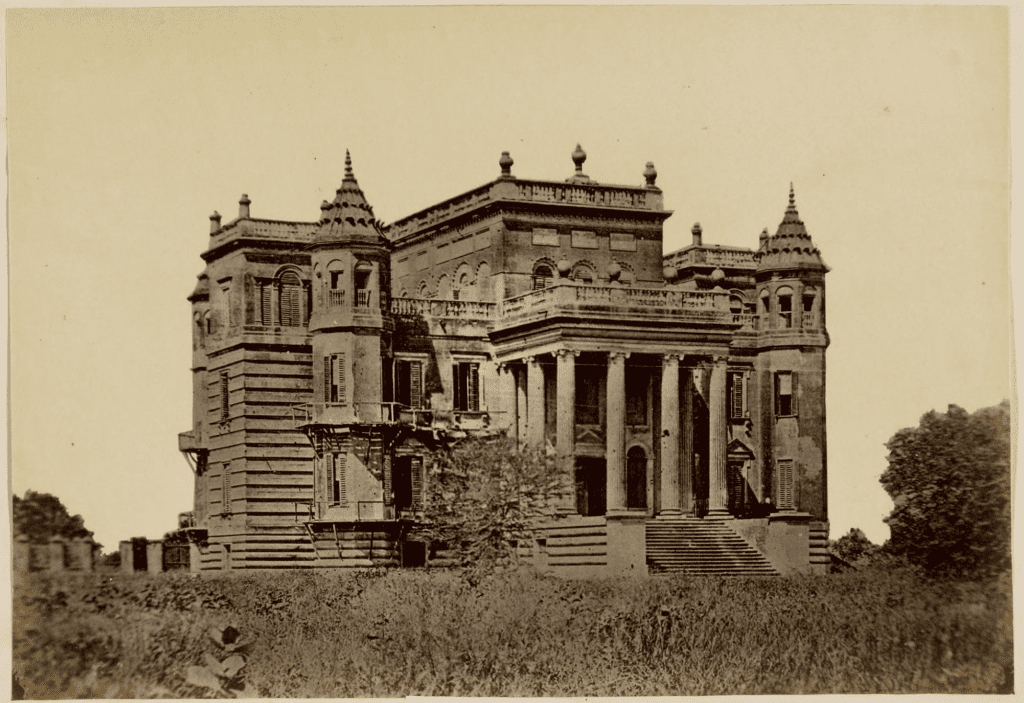Dilkusha Kothi
Dilkusha Kothi, also known as the “English House,” is an 18th-century building located in Lucknow, Uttar Pradesh. This historical building, which was once the palace of the British Resident General, is now in a state of ruin, but it remains an important architectural and cultural landmark in the city.
History
Dilkusha Kothi was built in the late 18th century as a hunting lodge for Nawab Saadat Ali Khan, the ruler of Awadh. The palace was later purchased by Major Gore Ouseley, who served as the British Resident General in Lucknow from 1818 to 1823. Major Ouseley converted the palace into a grand English-style country house, complete with sprawling gardens and fountains.

Source: Wikimedia
After Major Ouseley’s tenure as Resident General, the palace was passed on to a series of British officials and military commanders. During the Indian Rebellion of 1857, the palace was used as a military hospital by the British forces, who had established a stronghold in the city. After the rebellion was suppressed, the palace was returned to civilian use and underwent several renovations and modifications.
In the early 20th century, Dilkusha Kothi became the residence of the Raja of Talukdars, who were wealthy landowners in the region. The palace was used as a venue for grand social events and parties, and it became a popular spot for the city’s elite. However, the palace fell into disrepair after India gained independence in 1947 and was eventually abandoned.
The architecture of Dilkusha Kothi

Source: Wikimedia
Dilkusha Kothi is a fine example of colonial architecture, combining elements of English and Indian styles. The palace features a grand, symmetrical facade with two massive towers on either side. The front entrance is flanked by two smaller towers, each topped with a dome. The palace is made of red brick, with white stucco trim and decorative plasterwork.
The interiors of the palace are equally impressive, featuring grand halls and rooms with high ceilings and ornate plasterwork. The palace is said to have had a grand ballroom, which was used for dances and social gatherings. The gardens surrounding the palace were equally magnificent, with fountains, ponds, and landscaped lawns.
Current State

Unfortunately, Dilkusha Kothi is now in a state of ruin, with much of its structure and decoration destroyed. The palace has suffered from neglect and lack of maintenance over the years, and it has also been damaged by natural disasters such as floods and earthquakes.
Despite its dilapidated state, Dilkusha Kothi remains a popular tourist attraction in Lucknow. Visitors can explore the ruins of the palace and its gardens, and imagine what it must have been like in its heyday.
Efforts have been made to restore the palace and bring it back to its former glory, but these have been hampered by lack of funding and bureaucratic obstacles.
Conclusion
Dilkusha Kothi is an important historical and cultural landmark in Lucknow, offering a glimpse into the city’s rich colonial past. Despite its current state of ruin, the palace remains an impressive and awe-inspiring sight, and it is a testament to the architectural and cultural heritage of the region.
Efforts must be made to preserve and restore Dilkusha Kothi for future generations to enjoy and appreciate. The palace represents an important link to the city’s past, and it should be seen as a valuable resource and asset. With the right funding and support, Dilkusha Kothi could once again become a vibrant and thriving cultural hub in Lucknow, attracting visitors from all over the world.

